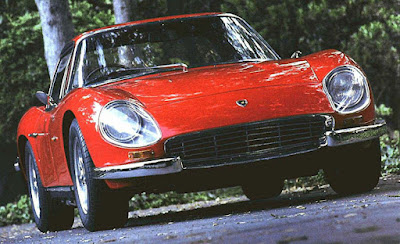Concept ONLY Recently, to commemorate the legendary Nissan Silvia, the Japanese car
manufacturer had released several rendering images of the car which are
re-imagined in a modern design interpretation featured with electric
drive. What does the original Nissan Silvia look like? Let's get a look.😎
 |
| The Nissan Silvia EV concept re-imagined the first generation of the Nissan Silvia CSP311 in a modern interpretation featured with electric drive. (Picture from: MotorTrend) |

As quoted of Wikipedia, this car began with the Japanese company's collaboration with Albrecht Graf von Goertz on the A550X project from 1962 to 1964. The first Silvia model was internally known as the CSP311, which debuted in 1965. It was a special semi-handbuilt construction that used the same chassis as the Datsun Fairlady 1600 SP311.
 |
| The Nissan Silvia CSP311 is debuted at the 1965 Tokyo Motor Show. (Picture from: MotorTrend) |
As quoted of Wikipedia, during this second production period the Nissan Silvia was produced in 7 generations. In the early 1970s the Silvia was built on the S10 chassis, and was further built on the S14 chassis for the American market started in 1980s and the S15 for the Japanese market until the end of production in 2002.
 |
| The Nissan Silvia EV concept is appeared with the fenders slightly dipped into the top of the wheel arches. (Picture from: MotorTrend) |
Back to the Silvia EV, who's the man behind the future car does? Unmitigated
the designer figure who made the design of the modern Nissan Silvia
electric powered car is Matthew Weaver, the Vice President of Design of
Nissan Europe. Reportedly, he did get a special assignment from the
company of his to make the designs of the future Nissan Silvia
electric-powered car.
As quoted of MotorTrend, that the Weaver's design specifically takes
inspiration from the first generation Nissan Silvia, where he maintains a
firm line that separates the top and bottom of the body from the
original. Furthermore, Weaver only made minor changes by making the
fenders slightly dipped into the top of the wheel arches.
While,
at the
front, there are small round headlights without the grill, due to the
EVs have different cooling requirements than conventional-engined cars,
so the grille was removed. At the back, there is a small strip for the
taillights that follows the line that runs along the side of the body.  |
| The Nissan Silvia EV concept is designed by Matthew Weaver, the Vice President of Design of Nissan Europe. (Picture from: MotorTrend) |
 "Silvia was ahead of its time, in a very calm and understated way. We are very pleased that Nissan is bringing back the name of the Silvia which was once a famous model in Japan, and also in several countries," said Matthew Weaver.
"Silvia was ahead of its time, in a very calm and understated way. We are very pleased that Nissan is bringing back the name of the Silvia which was once a famous model in Japan, and also in several countries," said Matthew Weaver."It has aged very well and will still have its place. It is also a great example of what is expected of a global product: high quality and universally appealing," he continued. *** [EKA | FROM VARIOUS SOURCES | MOTORTREND | MOTOR1 | WIKIPEDIA ]
Note: This blog can be accessed via your smart phone.



































